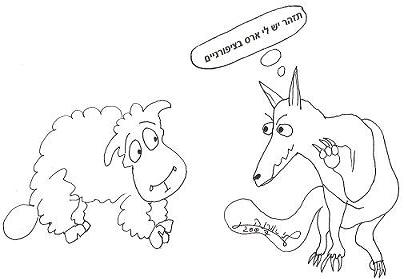
The sages thought that some animals could excrete venom through their claws and so kill other animals and birds. Thus, for example, the lion and the wolf can excrete venom which causes the death of the animal they attack. Therefore, even if a lion only scratches a sheep we fear that the sheep has been poisoned and so it is forbidden for consumption (in Halacha it is called tereifah). The sages discussed predators — which have venom, which can kill large animals like cows and oxen, which can only kill small animals like kids and lambs, and which can only kill birds. One of their discussions revolved around the fox.
They asked whether the fox has venom in its claws. One sage assumed it did not. The scholars asked him about this, based on incident which had occurred: a fox preyed upon a sheep and poisoned it. The sheep was brought to the sages, who ruled that the fox has the power to excrete venom which can kill a sheep, so the sheep was ruled a tereifah. The scholars rejected this proof from the story, arguing that it was a cat in the story. (All agree that cats have venom in their claws) and not a fox.
(Many times different issues in the Talmud are brought in varying versions. Alternate versions of the topic under discussion will begin “There are those who say” or “In other words,” and that is the case in this discussion, as well.)
There are those who say that the fox excretes venom, and the scholars asked about this halachic ruling: was there not an incident in which a fox preyed upon a sheep and the sheep, when brought before the sages, was permitted for consumption because the fox has no venom in its claws? A different scholar came along and rejected this proof, arguing that this incident did not involve a fox but a dog, and all admit that a dog has no venom.
(Babylonian Talmud, Tractate Chullin 53a)
